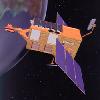The major script for the extraction of high time resolution data is called eaextract. This script is able to extract data from virtually all available PCA data modes, i.e.,
- Event modes:
- Data modes containing information on individual events, usually with a different energy resolution, high time resolution, and normally only covering part of the whole PCA energy band.
- Single bit modes:
- Data modes where only the arrival time of events detected in a certain energy band has been retained (i.e., these data modes do not have any intrinsic energy information).
- Binned modes:
- Data modes where an energy spectrum is accumulated for (short) time intervals, often with reduced energy resolution.
- GoodXenon:
- A specialised data mode providing high energy resolution and high time resolution, which is generally appropriate for high time resolution analysis of dimmer sources.
Generally, more than one of these specialised data modes are available for a given observation, with the choice of the data modes defined by the scientific purpose of the original observation. Onboard RXTE, the raw data stream coming from the PCA is passed through a data handling system (the EDS) which can produce data for up to eight different data modes in individual event analysers (EAs). You can find the data modes used in an observation by looking at the file starting with FIPC in the root directory of the observation. The columns EA1ModeNm, EA2ModeNM, and so on, contain the data mode for each event analyzer. Note that this data mode can change during the observation (this is rare but not unheard of).
The extraction of data for a given event analyser using eaextract is straightforward. Calling eaextract directly can sometimes be a little bit tedious since eaextract has to be called for all active PCU combinations. As for the standard analysis, eaextract is therefore mainly called via pcaextract for each PCU combination. As usual, adding the calls to your extraction script (allex) is strongly recommended.
Before using eaextract it is mandatory that you have run the pca_standard script to generate the standard directory structure for our RXTE extractions, including good time interval files for all different PCU combinations, and including the generation of the RXTE filter files (these are found in subdirectory filter produced by pca_standard).
On such a data structure you can then run eaextract via pcaextract for all PCU combinations. The syntax to invoke pcaextract is
pcaextract obsid obspath dirname -ea=ea -dt=dt list of energy channelswhere obsid, obspath, and dirname are the same arguments also used in the call to pca_standard, where ea is the number of the event analyser, and where dt is the time resolution expressed as a negative power of two. For example, to extract data with a time resolution of about 4 milliseconds (i.e., 2-3), use dt=3.
The list of energy channels defines for what energy channels you want to extract your data. These channels are given in units of raw PCA channels. Due to rebinning, not all possible channel boundaries are available. The code does not check for this! You will have to look at the CPIX keyword in the raw data files for this mode, which can be found by looking at the FIPC file as described above, to identify the possible channels. A typical list would be, e.g., 36 189 249, to extract spectra and lightcurves for channels 36-189 and 190-249. If you want to do phase resolved spectroscopy later, you will have to do one invocation of eaextract with channels 0 255 only as well. The RXTE GOF has a handy energy to channel conversion table on their WWW-pages.
Further important arguments to eaextract are:
- -all, -1off, -2off, -3off, and -4off
- Extract data where all PCU were on, or where PCU 1, 2, 3 or 4 was off. Combinations are possible, e.g., if you want to extract data for the time where PCU 1 and 2 were off, use -1off -2off. NOTE: As of March 2007, pcaextract can do this automatically for you. Just replace eaextract with pcaextract in the calls given above and omit the PCU combinations. The program will then automatically extract all available PCU combinations which where switched on for more than 4.5 minutes during your observation (ignoring GTIs).
- -exclusive
- If this keyword is given, use only those times where only the indicated PCU were off. As event and single bit modes do not include PCU information, it is almost always necessary to give this keyword and you should only omit it if you really know what you are doing. When calling eaextract via pcaextract you have to omit this keyword.
- -resp, -back
- If you want to do spectroscopy, use these keywords to generate an appropriate response matrix and background for the data mode. Do not even think of using the response and background of standard2f data. This will not work! It is generally recommended to use these keywords.
- -bary
- Generate barycentered lightcurves as well. This is normally necessary if you want to use the lightcurves to determine the period of an X-ray pulsar and not indicated if you only want to measure power spectra and the like (note that high time resolution lightcurves can be very large files).
- -nopcu0
- A special keyword to enable you to use the GTI file created with the -nopcu0 option of pca_standard. Note, however, that although the state of PCU0 was ignored in the generation of the GTI file, there is no way for non-binned data to perform a PCU selection, i.e., you will normally not need this keyword.
Remark: You can generate a total spectrum from the data by adding the individual spectra, best perhaps with the phaadd script, as phaadd also determines the corresponding response matrix and background, e.g., phaadd total_14off *_14off*pha (NB: make sure that the regular expression employed here only selects those files that you really want to add!).

